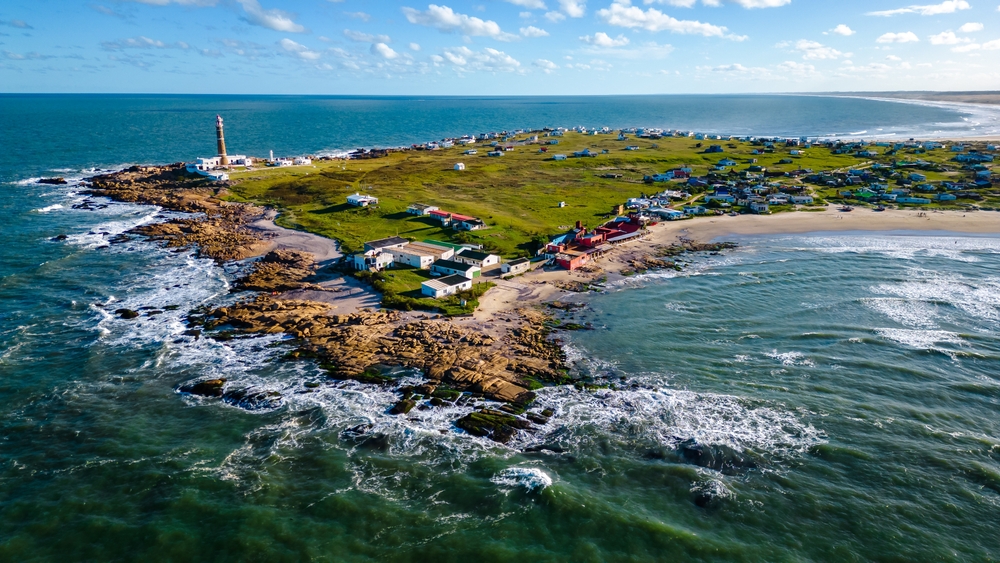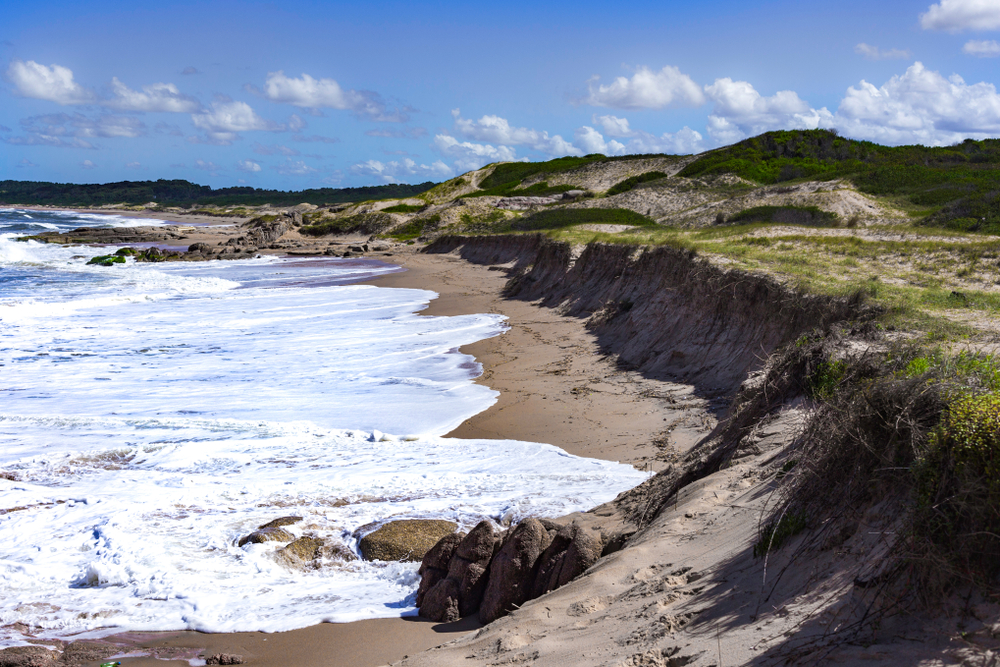The first national park in Uruguay is Parque Nacional San Miguel, established in 1937. It is located in the Rocha Department, near the Brazilian border. The park is known for its historical Fortaleza de San Miguel, built in the 18th century, as well as its wetlands, grasslands, and native forests.
About Uruguay National Parks
Uruguay, though smaller in size compared to its South American neighbors, is a country of understated natural beauty and ecological diversity. It is home to 4 national parks, each of which plays a critical role in conserving the country’s unique landscapes and biodiversity. From wetlands teeming with life to rolling hills and ancient forests, Uruguay’s national parks are essential for the protection of its natural heritage and offer opportunities for ecotourism and education. These parks reflect Uruguay’s commitment to sustainability and environmental stewardship.
Santa Teresa National Park, located in the Rocha Department along Uruguay’s Atlantic coast, is one of the country’s most visited and beloved parks. Known for its stunning beaches, lush forests, and historical landmarks, Santa Teresa offers a unique combination of natural and cultural attractions.
The park is home to a rich variety of flora and fauna, including native species such as capybaras and green parrots. Visitors can explore its extensive network of trails, relax on pristine beaches like Playa Grande, and tour the Santa Teresa Fortress, a well-preserved 18th-century structure that adds a historical dimension to the park’s appeal.
Cabo Polonio National Park – This is one of Uruguay’s most famous and visited parks, known for its stunning coastal landscapes, massive sand dunes, remote fishing village, and the large sea lion colony near the iconic lighthouse. Tourists are drawn to its wild, roadless nature and the unique experience of reaching it by 4×4 vehicles.
In Uruguay’s northeast, Esteros de Farrapos and Islands of the Uruguay River National Park protects vital wetlands, islands, and riparian forests along the Uruguay River. This park is a haven for biodiversity, hosting over 200 bird species, including the endangered marsh seedeater, as well as mammals like otters and armadillos. Its aquatic ecosystems also support diverse fish populations and provide critical breeding grounds for wildlife. Visitors can enjoy birdwatching, boat tours, and hiking while experiencing the tranquility of this unspoiled environment.
Quebrada de los Cuervos National Park, decomissioned as a national park in 2013, in the Treinta y Tres Department, offers a dramatic landscape of rugged hills, deep ravines, and winding streams. Its name, meaning “Ravine of the Crows,” reflects the presence of black vultures that soar above its cliffs. This park protects Uruguay’s native Atlantic Forest, a biome under significant threat across the region, and is home to a variety of wildlife, including foxes, armadillos, and colorful toucans. Popular activities include hiking along scenic trails, such as the Sendero del Indio, and camping in its serene surroundings.
Islas de la Coronilla, is another protected area located near the border with Brazil, is a coastal and marine park that protects critical habitats for sea turtles, sea lions, and migratory birds. Its sandy beaches and rocky islands are important nesting and feeding grounds for endangered species, including green and leatherback turtles. Visitors can explore the park’s marine ecosystems through guided boat tours and learn about ongoing conservation efforts to protect its fragile biodiversity.
Uruguay’s national parks face challenges such as habitat loss, pollution, and limited funding for conservation. However, the country has made strides in promoting ecotourism, environmental education, and community-based initiatives to safeguard these protected areas. These efforts help preserve Uruguay’s natural treasures while fostering sustainable development.
Uruguay National Parks

Cabo Polonio National Park
Explore Now
Esteros de Farrapos e Islas del Río Uruguay National Park
Explore Now
Isla de Flores National Park
Explore Now
San Miguel National Park
Explore Now
Santa Teresa National Park
Explore NowFAQ’s
1. What was the first national park in Uruguay?
2. What is the largest national park in Uruguay?
The largest national park in Uruguay is Parque Nacional Esteros de Farrapos e Islas del Río Uruguay, covering approximately 174 square miles (450 square kilometers). It consists of wetlands, islands, and riparian forests along the Uruguay River, providing important habitat for many bird species and other wildlife.
3. What is the smallest national park in Uruguay?
The smallest national park in Uruguay is Parque Nacional Franklin Delano Roosevelt, covering around 1.2 square miles (3.1 square kilometers). Located near Montevideo, it serves as an urban green space for recreation and conservation.
4. What is the most popular national park in Uruguay?
One of the most visited national parks in Uruguay is Parque Nacional Cabo Polonio, located on the Atlantic coast in Rocha Department. It is famous for its remote sandy dunes, a lighthouse, a large colony of sea lions, and diverse marine life. The lack of electricity and roads gives it a unique, untouched feel, attracting ecotourists and adventure seekers.
5. What percentage of Uruguay's land area is protected through official National Parks?
Approximately 2% of Uruguay’s land area is protected through national parks and other official conservation areas.
6. What other protected areas are there in Uruguay?
In addition to national parks, Uruguay has protected landscapes, wildlife reserves, and biosphere reserves. Some notable ones include:
- Laguna de Rocha Protected Area – A key wetland ecosystem supporting birdlife.
- Quebrada de los Cuervos Protected Area – A rugged canyon with native forests and waterfalls.
- Bañados del Este Biosphere Reserve – A UNESCO-recognized wetland area important for biodiversity.
- Isla de Flores Wildlife Refuge – An island protecting seabirds and marine life.
7. What nature attractions does Uruguay have apart from National Parks?
Uruguay is home to several stunning natural attractions, including:
- Punta del Diablo & Santa Teresa – Beautiful beaches, forests, and historical sites.
- Valle del Lunarejo – A hidden valley with waterfalls and unique rock formations.
- Salto del Penitente – A scenic waterfall in Lavalleja.
- Grutas del Palacio – A UNESCO-listed cave system with unique rock formations.
8. What species are endemic and unique to Uruguay alone?
Uruguay has a relatively low number of endemic species, but it is home to unique wildlife, including:
- Uruguayan Swamp Rat (Scapteromys aquaticus) – A rare semi-aquatic rodent.
- Golden Dorado (Salminus brasiliensis) – A prized freshwater fish found in Uruguay’s rivers.
- Numerous endemic plants – Such as Butia yatay palm trees, which dominate certain landscapes.
Uruguay also provides habitat for maned wolves, capybaras, armadillos, and a variety of bird species.
9. What is Uruguay's main international airport?
Uruguay’s main international airport is Carrasco International Airport (MVD), located near Montevideo.
10. What international airline companies fly into Uruguay?
Uruguay is served by multiple international airlines, primarily operating flights to and from South America, North America, and Europe. Some airlines flying into Carrasco International Airport (MVD) include:
- Aerolineas Argentinas
- Air Europa
- American Airlines
- Azul Linhas Aéreas
- Copa Airlines
- Gol Linhas Aéreas
- Iberia
- LATAM Airlines
- Paranair
- Sky Airline
11. Who manages the national parks of Uruguay?
Uruguay’s national parks and protected areas are managed by the Ministerio de Ambiente (Ministry of Environment) and its Sistema Nacional de Áreas Protegidas (SNAP). Their official website is:









































































